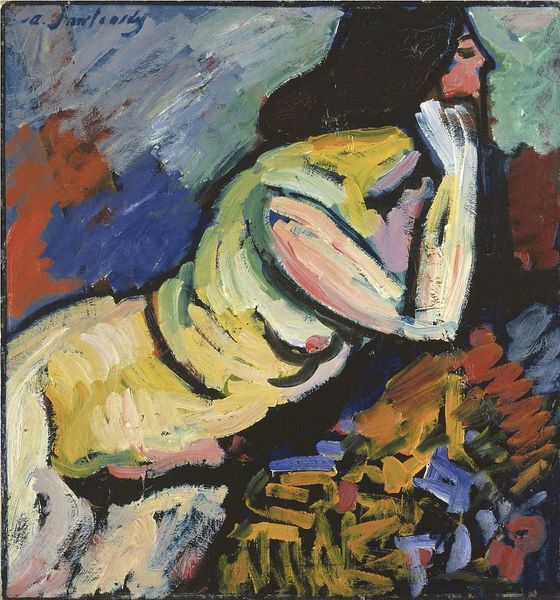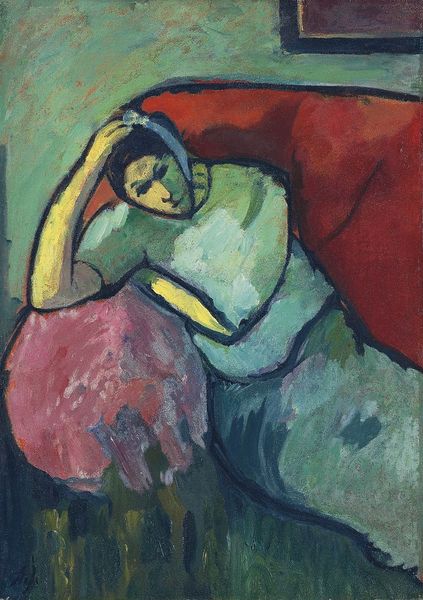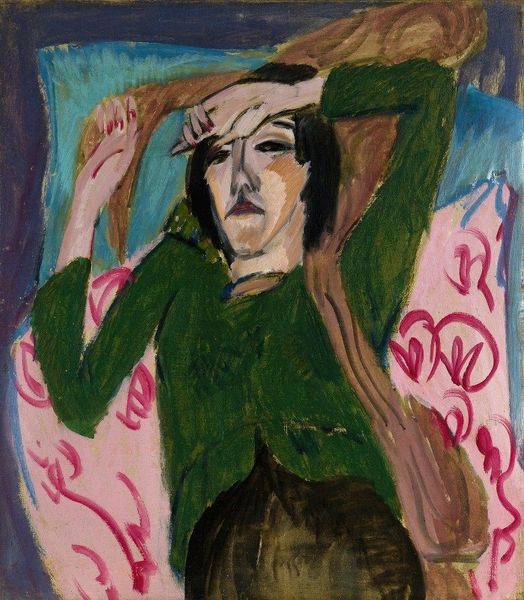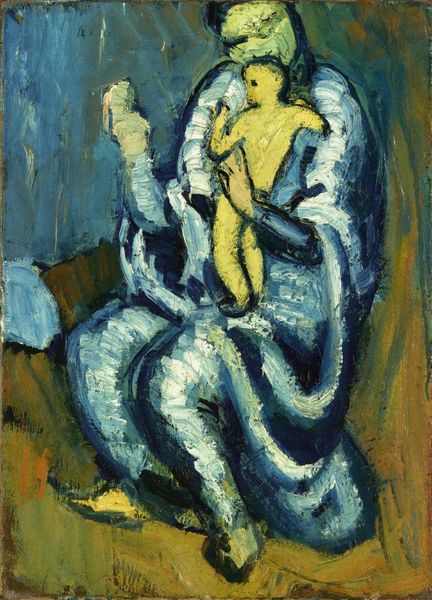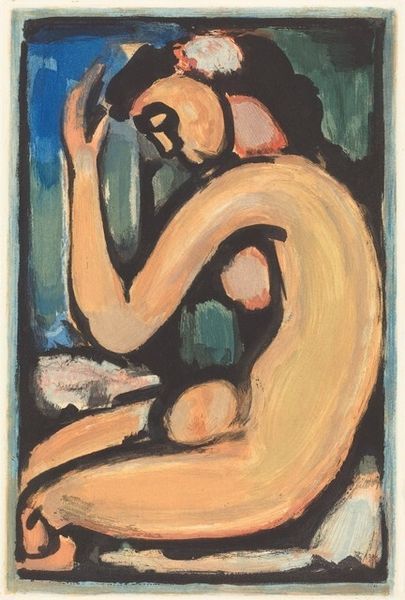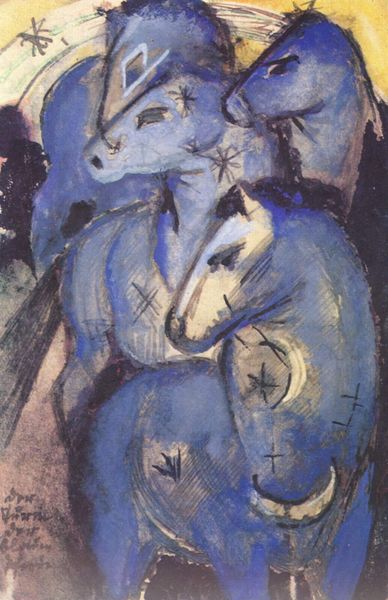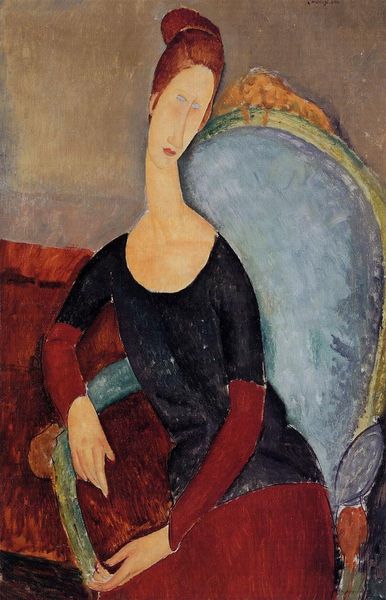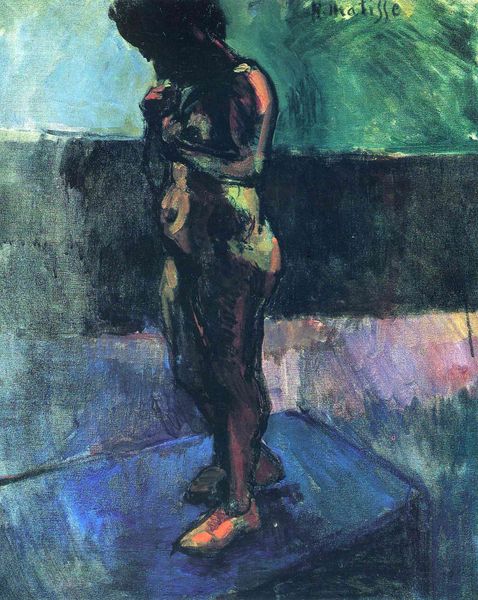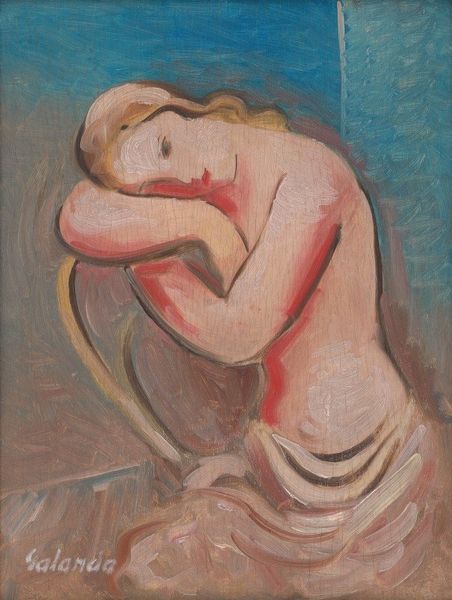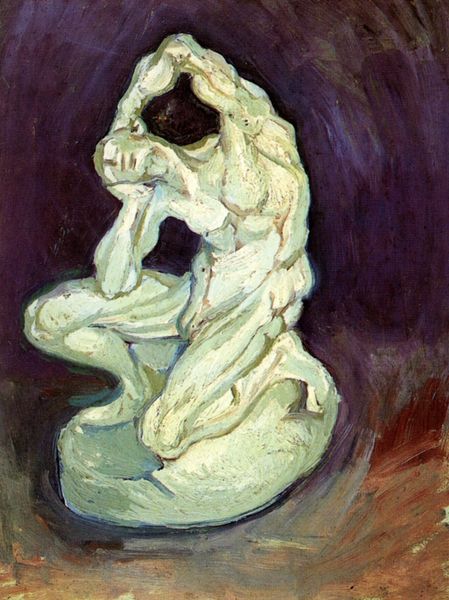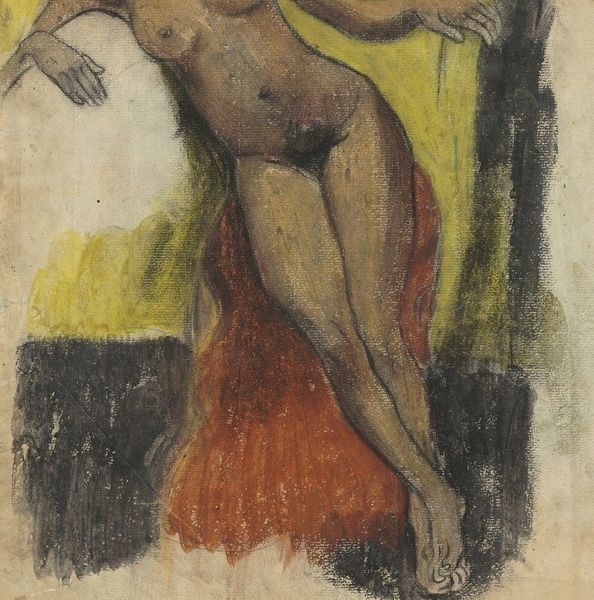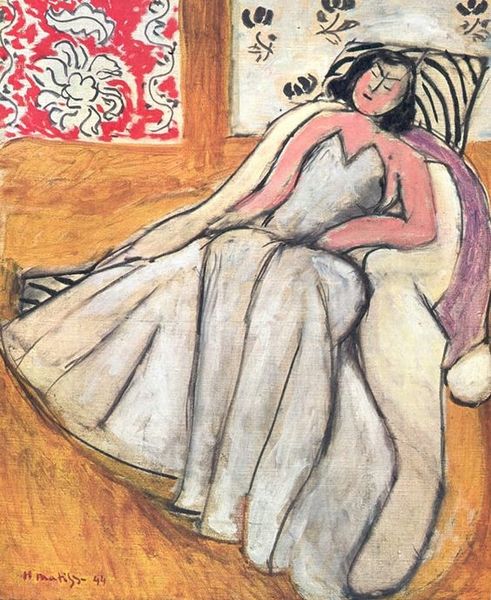
drawing, pastel
#
drawing
#
oil painting
#
female-nude
#
coloured pencil
#
pastel chalk drawing
#
symbolism
#
pastel
#
post-impressionism
#
nude
Dimensions: 33.7 x 31.1 cm
Copyright: Public domain
Paul Gauguin created "Breton Eve" using charcoal and pastel on paper sometime around 1889. Gauguin was a leading Post-Impressionist artist who rejected the urban and industrialized world, and sought refuge in so-called 'primitive' cultures like that of Brittany, France. Here, he reinterprets the biblical Eve, positioning her within a Breton landscape rather than the Garden of Eden. There's a poignant vulnerability in her posture, as she sits naked, hands clasped to her face, in the aftermath of temptation. The serpent, a symbol of sin, looms nearby. The artist merges themes of temptation with the sensuality he found in Breton women. This intertwining of religious allegory and personal experience offers a window into Gauguin's complex relationship with spirituality and sexuality. Gauguin's "Breton Eve" isn't just a depiction of a biblical figure; it's an exploration of desire, guilt, and the search for authenticity in a world he viewed as increasingly corrupted.
Comments
No comments
Be the first to comment and join the conversation on the ultimate creative platform.
